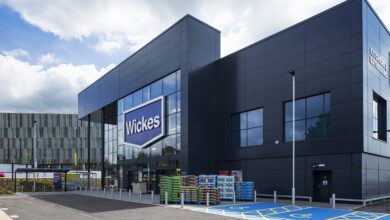Are salary increases the only way to keep retail staff happy?
Retail Sector talks to Martin Smethurst, chief customer officer at VoCoVo, about what retailers can do to keep their staff happy outside of pay increases, and how technology can aid this endeavour

Register to get 1 free article
Reveal the article below by registering for our email newsletter.
Want unlimited access? View Plans
Already have an account? Sign in
In the past few weeks a number of retailers including B&Q and Currys have announced that they will be increasing staff pay. In the case of B&Q it is raising its UK minimum hourly rate to £12.71 per hour, above the National Minimum Wage which is increasing to £12.21 per hour on 1 April. While competitive pay is important to staff happiness it is not the be all and end all. There are many things retailers can do to ensure their employees are happy and engaged in the work that they do.
Competitive salaries
The first point to make is that a competitive salary cannot be replaced. While retailers are able to do many things to make the working environment a place where people want to be and staff, pay will always be a very important factor. Martin Smethurst, chief customer officer at VoCoVo, agrees with this sentiment and believes it is a very good thing that so many companies are choosing to pay their staff above minimum wage.
“We all know that well paid, well organised teams are more productive, happier and more content and this approach will not only attract new staff, but also help retain staff as well. Keeping pace with pay is super important. It’s not only lever to make people stay and make people happy, but it certainly goes some way.
“It’s great that retailers recognise just how important their frontline retail staff are to their business. They are the face of that of their brand and their organisation, they physically work hard and at times they’re putting up with some difficult situations and difficult areas,” Smethust says.
What else can retailers do?
Away from pay, Smethurst stresses that making the working environment a happy place and a place that people want to be is paramount to the happiness of staff, which will ultimately benefit customers and the business overall. “If you’re unhappy in what you do or you don’t feel valued, then generally you don’t hang around,” Smethurst explains.
There are a number of ways that this can be achieved but one thing Smethurst believes is very important is making the work place a good social environment, where colleagues are able to communicate efficiently with each other and feel like they are a team. Smethurst states that VoCoVo specialises in three things, connecting colleagues together, connecting colleagues to customers, and connecting colleagues to the store.
How can technology assist this?
“If you think about a huge supermarket or a huge DIY retail store, sometimes whilst there may be 30 or 40 in the team on the shop floor, they can be 50, 60, 70, metres apart. What technology can do is to bring them together so it feels like they’re working alongside each other,” Smethurst says.” They’re able to talk freely using normal human speech, they’re able to have conversations, and they’re able to have a chat and have banter as well to feel part of the team.”
It can also have a huge effect on seasonal staff, something retail has a lot of. With certain technologies helping to increase communication between staff, temporary staff can integrate into the team much quicker which can help their happiness and overall productivity. It can also make their training a bit easier as they may not need to be shadowed by a more senior member of staff for as long as a result of the technology safety net.
“Staff are given training but can be thrown into the middle of a store and expected to be productive and useful within the first few days. Having a headsets on and pushing a button, they’re immediately backed up by 100 years of retail experience. So any questions that a customer may ask them, any things they’re stuck with, on where to go or what to look for, they can push a button and get immediate help. So we think that new staff and casual staff coming in at peak periods can be productive much quicker,” he adds.
Technology such as headsets or tablets can also have a major benefit to the customer. When staff are presented with a query they are unsure of instead of having to find another member of staff, senior or otherwise, or head off the shop floor, staff can instantly ask another staff member via headset or search for the information they need and present it to the customer without having to go away from them. It also provides the customer with immediate proof that their query is being handled and not just forgotten.
What comes next?
If technology can help create a better workplace environment for staff, increasing their happiness and productivity, then surely it is a benefit to retailers to keep introducing more technology to the shop floor. Smethurst believes that the next development is to connect the shop floor technology with other technologies including potentially the use of AI. This would keep the human touch between the customer and the brand but allow staff to get even better information to give to the customer to improve their in-store experience.







